A coastline can define a country. Where a country’s borders meet the sea is often where the highest population concentrations live, where important economic activity takes place, and sometimes a place of world-renowned beauty.
More than 70% of the Earth is covered in water, and the countries with the longest coastlines in the world are the ones most able to take advantage of this natural resource.
In this post, we’ll explore some seriously long coastlines and answer the question: Which country has the longest coastline in the world?
Read on to learn about thousand-island nations, more than one beach paradise, and to see who comes out on top.
10. New Zealand – 15,134 Km / 9,404 Miles
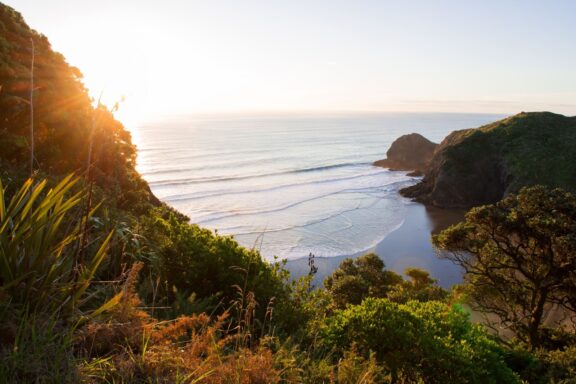
Tucked into the southwestern corner of the giant Pacific Ocean lies the island nation of New Zealand. If you’re surprised to see this country make the list of colossal coastlines, you’re probably not alone. New Zealand is so dwarfed by its giant neighbor, Australia, that it’s easy to overlook. There’s even an entire Subreddit dedicated to maps that neglect to acknowledge the country’s existence.
New Zealand is perhaps most famous for its diverse flora and fauna, both of which are highly concentrated along its 15,134 km coastline. The nation is made up of three main islands and roughly 600 islands in total. It’s these islands that give New Zealand so much coastline on the Pacific Ocean and Tasman Sea.
Other claims to fame from this country are that the Lord of the Rings movies were filmed here, their national rugby team is famously intimidating, and New Zealand wine is exported to all over the world.
9. United States of America – 19,924 Km / 12,380 Miles
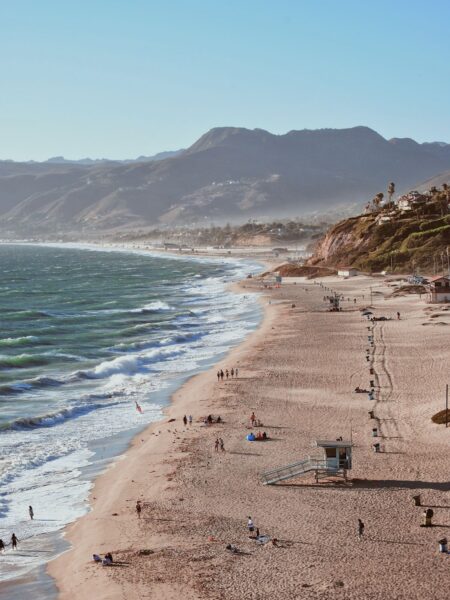
The United States is one of the largest countries in the world. Its 50 states are made up of large forest areas, deserts, mountain ranges, wetlands, and many other geographic features. There are also several small territories that exist outside the continental United States.
One interesting feature of the United States is that it has coasts on three different oceans: the Pacific, the Atlantic, and the Arctic. It also borders the Gulf of Mexico. The variety in waters significantly adds to the country’s diversity of weather and natural resources.
This large country has a total coastline of approximately 19,924 km, but which state has the most coastline? There’s no competition here; the answer is Alaska.
Alaska’s shoreline is 10,686 km or 6,640 miles (10,686.04 km) long and borders both the Pacific Ocean and the Arctic Ocean. While Alaska is not connected by land to the rest of the continental United States, it is an important economic center for fishing, tourism, and oil production.
Dramatically different from Alaska’s freezing coast, some of the most famous coastlines in the USA can be found in the states of California, Florida, and Hawaii. It’s here that you’ll find idyllic sandy beaches, warm waters, and incredibly popular vacation spots.
It’s worth noting that the National Oceanic and Atmospheric Association (NOAA) found the US coastline to be 153,646 km (95,471 miles) long. This would make it the country with the second-longest coastline in the world. The statistics we’ve used in our ranking come from the CIA World Factbook and the US Census Bureau.
8. Australia 25,760 Km / 16,007 Miles
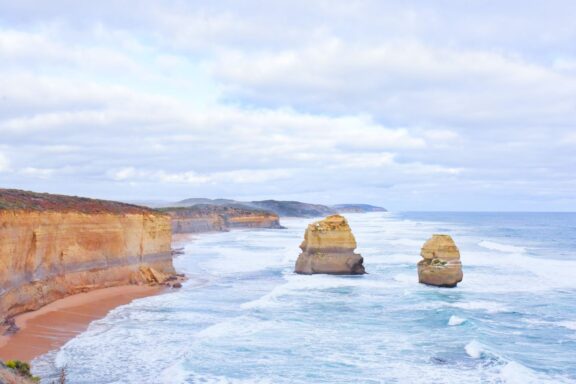
Is it a country? Is it a continent? It’s both! Australia is a unique country for many reasons, and just one of them is that it’s pretty much got its own continent.
This island country in Oceania has a total coastline of 25,760 km. Like the United States, Australia’s coast lies along three major bodies of water: the Pacific Ocean, the Indian Ocean, and the Southern Ocean.
A significant part of the Australian population lives along the coastline of the country. This is most likely because of the immense beauty of Australian beaches, the economic opportunities along the country’s coast, and the inhospitable nature of the nation’s interior.
Australian coasts are some of the most popular tourist destinations in the world. Located on Australia’s east coast, the Great Barrier Reef is the world’s largest coral reef and is one of the 19 UNESCO Heritage Sites in Australia. Tourists from all over the world come to dive at this iconic location or to surf one of Australia’s many famous beaches.
7. Japan 29,751 Km / 18,486 Miles
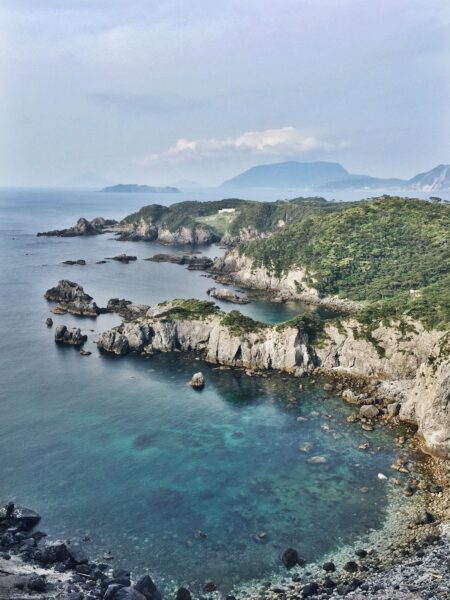
While geography buffs may be able to name a few of the islands that make up the country of Japan, it’s doubtful anyone can name them all. That’s because there are an incredible 6,852 islands that constitute the Japanese archipelago.
Considering the sheer number of islands claimed by this country, it’s no wonder Japan boasts a coastline of 29,750 km. The five largest islands in this group are Honshu, Hokkaido, Kyushu, Shikoku, and Okinawa. They are also the most economically important islands in the country.
In part because of Japan’s high proportion of coastline, many of its largest cities were built on the country’s shoreline. It’s also home to some major international ports, such as the Port of Tokyo, one of the largest in the Pacific Ocean.
Japanese culture is one of the most easily recognizable around the world, and this is in part due to its history of geographical isolation from other civilizations. To this day, fishing, aquaculture and trade are significant professions that support the livelihood of people living on the Japanese coast.
6. Philippines 36,289 Km / 22,549 Miles
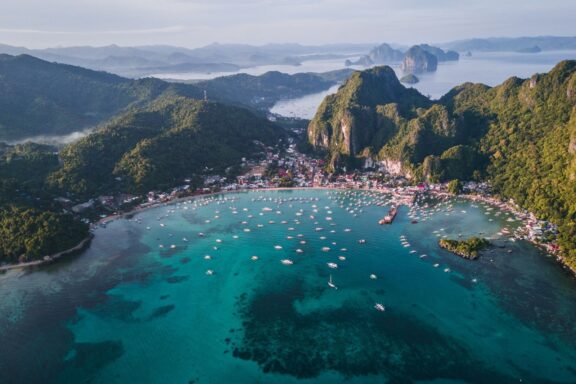
If you were shocked by the number of islands that make up Japan, hold on. Located in the Pacific Ocean near mainland Asia lies the Philippines, a country made up of 7,641 islands, of which 2,000 are inhabited. Many of this nation’s islands are tiny and unnamed, but they all add to its super long coastline.
The coastline of this country is very irregular, with numerous bays and gulfs. Like many other countries with long coastlines, the coastal areas of the Philippines are the most densely settled areas. Approximately 60% of the country’s population and most of its larger cities are located along the coastline.
Famous for world-class diving and beautiful beaches, the Philippine coastline attracts numerous tourists to the country each year. Tourism, along with fishing, is a major contribution to the country’s economy.
5. Russia 37,653 Km / 23,396 Miles
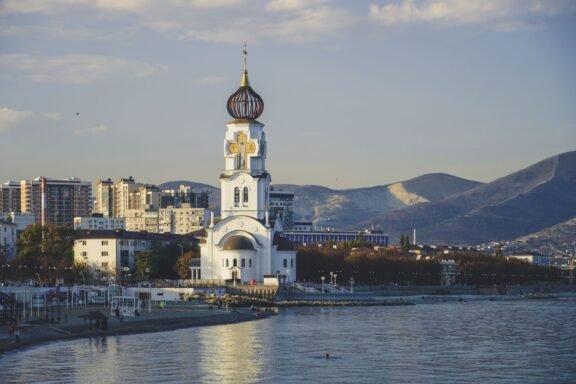
Coastline may not be the first thing that comes to mind when thinking about the country of Russia, but one look at a map could change that. Russia is the largest country in the world, and much of its borders are shared with oceans.
Russia’s shoreline is shared with the Pacific Ocean in the east, the Atlantic Ocean in the west, and the Arctic Ocean in the north. It also borders the Baltic Sea, the Black Sea, the Caspian Sea and the Azov Sea.
While its most populous city is Moscow, some of Russia’s most important coastal cities include St. Petersburg and Vladivostok. St. Petersburg is the most populous city on the Baltic Sea and is considered to be the cultural capital of Russia. More than 6,000 km away, on the opposite end of the country, Vladivostok is a city with a history of being a highly important port and naval base.
In addition to being the world’s largest country, Russia also has Europe’s longest river (the Volga), Europe’s largest lake (Lake Ladoga), and the world’s deepest lake (Lake Baikal).
4. Greenland 44,087 Km / 27,394 Miles
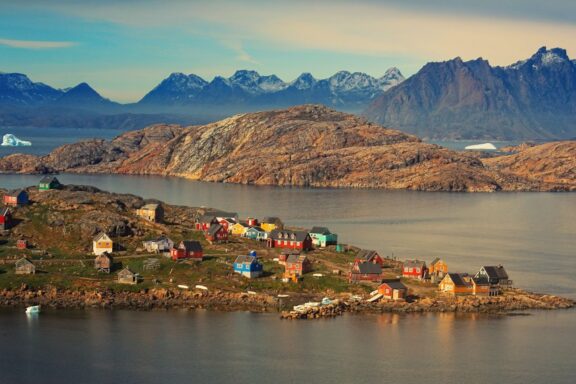
Greenland may technically exist within the Kingdom of Denmark, but it is an autonomous country. It also has an impressive coastline, measuring 44,086 km long. This icy nation is located between the Arctic Ocean and the Atlantic Ocean, and its closest neighboring countries are Canada and Iceland.
Despite its misleading name, about 80% of Greenland’s landmass is covered in ice. Due to the massive amount of ice dominating the country’s interior, it is only the coastal areas that are inhabited by people. These coastal areas are also home to a wide variety of plants and animals, and the world’s largest national park is located in the northeastern part of the country.
Some incredible features of Greenland’s coastline are its various fjords, glaciers, icebergs, and cliffs. The country’s relative isolation and extreme weather serves to amplify its geographic beauty.
3. Indonesia 54,716 Km / 33,999 Miles
Nusa Penida, Indonesia Coastline
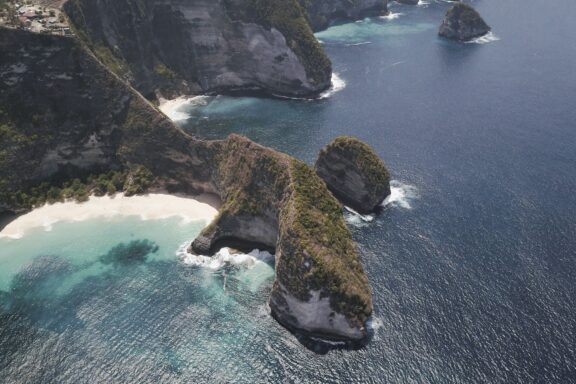
This country may not even be in the top ten when it comes to landmass, but it is the world’s largest archipelagic state. There are an amazing 17,508 islands in Indonesia, about 6,000 of which are inhabited. Many of these islands have their own language and culture, and they all contribute to Indonesia’s 54,716 km coastline. This is how Indonesia ranks third among the countries with the longest coastline in the world.
Many coastal areas of this many-island nation are popular tourist destinations, including the beaches of Bali, famous for its surf and laid back atmosphere. Indonesia is also home to 147 volcanoes, 76 of which are active. The combination of volcanic activity and tidal forces is one reason Indonesia has such an interesting topography and coast line.
2. Norway 83,281 Km / 51,748 Miles
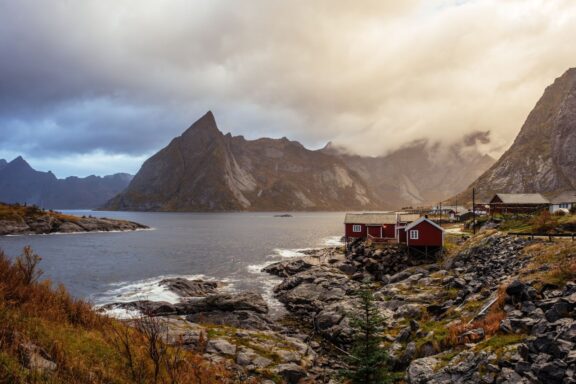
Norway occupies the northwestern corner of Europe on the Scandinavian Peninsula. The waters that border the country are the Barents Sea to the north and the North Atlantic Ocean to the west.
One notable feature of the Norwegian coastline is that it’s quite irregular — there are many rugged indentations caused by fjords and islands, and there is an archipelago, Svalbard, located far to the north in the Arctic Ocean. The coastline is also where a large portion of the Norwegian population lives.
In addition to being famous for its legendary history of Vikings, Norway is also well known for its stunning fjords, salmon, and as an ideal place to watch the Northern Lights. Due to the long hours of sunlight it sees during the summer, it is sometimes referred to as the “Land of the Midnight Sun.”
1. Canada 202,080 Km / 125,567 Miles
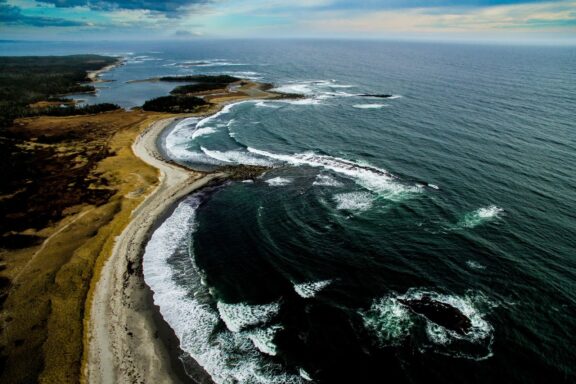
Canada hast the longest coastline in the world.
When it comes to the country with the longest coastline in the world, there’s no competition. Canada is the second-largest country in the world by total area, but it has the longest coastline by a long shot.
Canada’s 202,080 km coastline stretches along the Pacific Ocean in the west, the Atlantic Ocean in the east, and the Arctic Ocean in the north. With such an extensive coastline that borders different oceans, it’s no wonder that the landscape along the shoreline varies significantly depending on location.
The Canadian landscape is one of the most pristine in the world, partially because about 80% of the country is uninhabited. It’s also home to some huge land animals: moose, grizzly bears, polar bears, and wood bison, to name a few.
Home to important ports for trading and providing access to some of the best fishing in the world, Canada’s coastline is a central component of its economy.